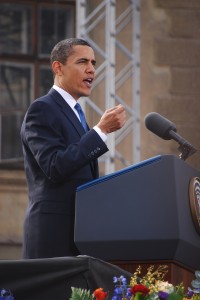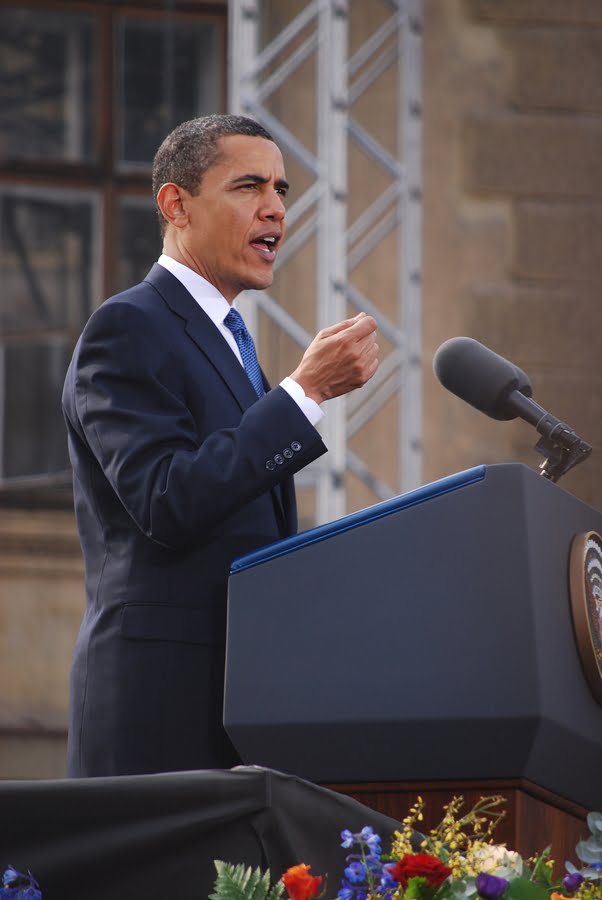2012-10-07 by Richard Weitz
The 2012 Moscow Nonproliferation Conference devoted an entire session to the issue of “Strengthening Nuclear Security,” which focused on the progress achieved by the first two nuclear security summits and what issues remained for the 2014 nuclear security summit (NSS) and beyond. In that regard, the key players evidently remain open-minded about the value of holding more summits after the 2014 NSS takes place in The Hague.
Laura Holgate, Sous-Sherpa for the 2012 Seoul Nuclear Security Summit and Senior Director for WMD Terrorism and Threat Reduction on the U.S. National Security Council, offered the U.S. government’s perspective on the summits. Holgate and other U.S. government leaders launched the summit process, hosting the first such meeting in April 2010.

Holgate noted that, while the nuclear security summits were a relatively recent innovation, the effort to reduce the risk of nuclear terrorism began in earnest at a 1996 summit in Moscow of the Group of Seven Industrial States (the G-7) plus Russia, which together constituted the Political Eight (P-8). Russia would become a full G-8 member a few years later but even in 2010 was considered to have the right to equal say with the other G-7 on nuclear security issues given its massive nuclear arsenal and extensive civilian nuclear energy sector.
That Moscow summit focused on enhancing the safety and security of Russia’s Soviet-era nuclear weapons legacy.
Since then, the G-8 and additional countries have been implementing the roughly same nuclear agenda, despite all the changes in world politics in the past two decades.
These goals included:
- Converting civilian reactors from using highly enriched uranium (HEU), commonly found in nuclear weapons, to using low enriched uranium (LEU), which is not easily used to power a nuclear explosion
- Eliminating excess plutonium, the other fissile material commonly used in nuclear weapons
- Strengthening the International Atomic Energy Agency (IAEA) and its safeguards system
- Enhancing the physical protection of sites having dangerous nuclear material
- Improving nuclear forensics, which can help determine the origin of any nuclear material
- Promoting treaties and international laws against nuclear terrorism
- Developing capabilities to interdict smugglers of nuclear materials.
Holgate noted that these goals and concepts have remained; the main challenge has been to take concrete measures to achieve them.
To this end, the nuclear security summits were an attempt to jump start progress relating to three continuing problems:
- There are thousands of tons of nuclear material located in many countries, much of it under the ownership of private entities
- Determined and capable terrorists and rogue states seek this material as weapons to kill millions through catastrophic terrorism
- Both the targets and the consequences of nuclear terrorism are potentially global in scope.
President Barack Obama declared he would eliminate or secure all dangerous nuclear material within four years in his April 2009 Prague speech.
He decided to organize the inaugural Nuclear Security Summit in April 2010 to support this objective. That first meeting focused on enhancing the security of unsecured fissile material stocks (highly enriched uranium and plutonium), such as that found at a civilian nuclear power plant in the fuel assemblies, which could be used to manufacture a nuclear bomb.
At the time, other international institutions addressed the related issues of nuclear nonproliferation, nuclear disarmament, and the peaceful use of nuclear energy. Unlike the problem of countering vertical and horizontal nuclear weapons proliferation, where existing institutions exist (such as START and the NPT), attempts to improve the security of existing nuclear materials had been ad hoc attempts to strengthen and integrate national laws, programs, and regulations.
The United States and several other countries were pursuing initiatives in this area but they needed wider buy-in to be effective given the problem’s magnitude. Periodic multinational meetings occurred to publicize the issue of nuclear terrorism, but they lacked follow through. The summit was deliberately designed to include almost all the important countries for the nuclear security issue and to require concrete measures of progress in addition to the invariably vague and non-binding political declarations.
According to Holgate, the summits were not intended to replace the existing nuclear security structures or to become a permanent fixture of the nonproliferation architecture. Instead, they were designed to achieve the goals identified earlier.
In Holgate’s assessment, the 2010 NSS in Washington and the 2012 NSS in Seoul have made the world safer by strengthening the nuclear security architecture (treaties, institutions, capabilities, norms, practices, etc.).
For example, the 2010 summit (it was claimed by Holgate) subsequently led states to:
- Reduce civilian use of HEU
- Create new centers of excellence to improve nuclear security and training, and establish a network to coordinate them
- Promote the movement of nuclear material to more secure locations, often through repatriating the material to Russia or the United States
- Strengthen counter-smuggling efforts through enhanced national capabilities for intelligence and law enforcement and broader international cooperation regarding these capabilities
- Induce more countries to ratify the nuclear terrorism treaties
- Improve control over sensitive nuclear information
- Update nuclear security regulations as well as created new regulations and regulatory bodies.
The 2012 summit in Seoul expanded the agenda of nuclear security topics beyond those covered in 2010.
In addition to minimizing civilian use of HEU and enhancing the security of nuclear facilities, it encouraged states to consider how to fortify the security of their information and transportation systems for nuclear materials, to develop their nuclear forensics capabilities, to prevent illicit nuclear trafficking across national boundaries, to provide targeted assistance for updating national regulations, and to develop additional national and regional assets for nuclear materials security.
Due to last year’s Fukushima nuclear disaster in Japan, the Seoul summit addressed nuclear safety as it applies to nuclear security, such as how to maintain the security of nuclear materials at the site of a nuclear accident.
In addition, the Nuclear Security Summit was accompanied by two related events. First, an expert symposium is gathering to analyze what nuclear specialists, NGOs and the mass public can do to promote nuclear security. Second, a conference of several hundred nuclear industry executives discussed how to strengthen nuclear safety more directly
In Holgate’s assessment, the two national security summits had other favorable effects.
They resulted in (it was claimed):
- Civil society and the nuclear industry becoming more interested in nuclear materials security, including through the advent of expert and industry summits held on the sidelines of the NSS.
- New emphasis on securing radioactive sources as well as direct use nuclear material.
- An enhanced the role of the IAEA in nuclear security
- A reconceptualization of nuclear safety as complementary to nuclear security rather than as in tension with it
- Interpol’s being added to the network of international institutions engaged in this area
- Saw national leaders become personally engaged in countering nuclear terrorism.
Holgate related that, while the U.S. government was preparing for the 2014 NSS, it was undecided whether to support convening additional nuclear security summits after 2014.
The U.S. goal was to continue strengthening the global nuclear security architecture, and the nuclear security summits were judged by how they have and could contribute to this end.
In any case, the United States was developing new unilateral, bilateral, and multilateral initiatives to enhance global nuclear security.
For example, the United States was hosting the first ever conference of nuclear security regulators this December. If successful, Holgate thought such a meeting could become a regular event.


